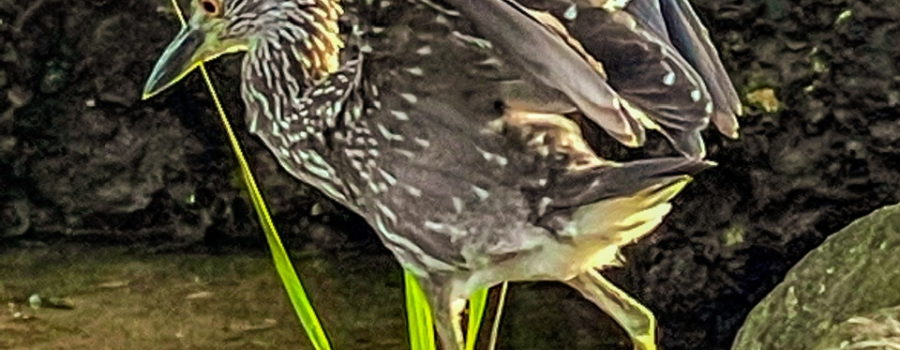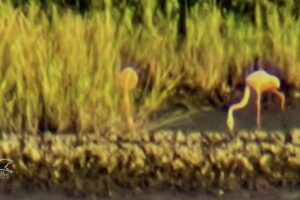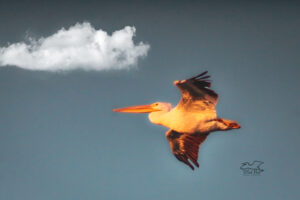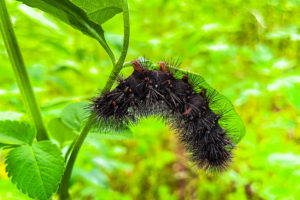An Amazing Encounter with a Yellow Crowned Night Heron

Last week I took a short trip south to Crystal River, Florida to visit with my Mom, and we decided to hop out to the local beach. It’s a man made beach, and nowhere near as nice as the typical “Florida beach”, but it’s not bad. Back when I lived in that area I went there quite often for sun, sand, and to look at the wildlife. The beach was built at the end of a long, winding road through the wetlands, and it is a pretty drive. It’s been there for many, many years, so it has attracted a lot of the usual beachy wildlife, and I was not at all disappointed with what I saw on this particular trip. But the highlight of the trip was definitely my encounter with this juvenile yellow crowned night heron.

I spotted the heron on the stone jetty that juts out into the water while I was walking along the beach. At that point the sun was behind it, and I couldn’t really tell what type of heron it was, just that it was a heron based on it’s body shape. I had seen a little blue heron on the other jetty, so I thought it might be another one. I approached it slowly and started taking photos. As I quietly approached, I also moved to a position where the light was more advantageous and quickly realized that it was a juvenile. It was surprisingly unconcerned by me and over the course of about half an hour I got to within 10-15 feet of it. During that time it preened and groomed itself between periods of staring intently at the ground looking for the small crabs and insects that it feeds on. It would catch something, swallow it, and then groom for awhile. I know it was keeping an eye on me, but it didn’t seem threatened. I was standing still in the water, not wanting to get any closer and frighten it when it decided to jump down from it’s rock and very purposefully strode off into the mangroves, after crabs, I suspect.

Based on it’s size and coloring, I knew it was either a black crowned night heron or a yellow crowned night heron. The juveniles of those two species look very similar, and both are found in the Crystal River area. A little research led to the identification as a yellow crowned night heron. They tend to have more, and smaller white spots than the black crowned night herons, and they also have somewhat longer legs and a thicker bill. I would have loved to see an adult out there as well since they are very attractive small, mostly blue herons with a distinct black and white face and a yellowish patch of feathers on top of the head. Maybe next time!

The night herons are related to egrets and bitterns and to a lesser degree, pelicans and ibises. Even though they look similar (but smaller) they are considered quite separate from the day herons like the great blue heron and the green heron. Yellow crowned night herons generally live in marshes, swamps, wooded wetlands, and along lake shores and river beds. They range from south Florida into Central America, the Caribbean, and into northern South America as year round residents. During the summer breeding season they can be found as far north as the northern border of the United States and as far west as Texas and Oklahoma. The two things that seem to influence both their range and the timing of their migration (for those populations that do migrate) are the availability of crustaceans to feed on and trees and shrubs to nest in.

I’m sure I will be back on a beach or on one of our many rivers again soon, and I will definitely keep looking for an adult yellow crowned night heron to go along with my juvenile. I can only hope to have half as much luck getting close to and photographing an adult as I did with this juvenile! When I do get lucky enough to encounter one, be sure I will be sharing that experience with all of you! Until then, keep getting out there and enjoying Mother Nature!






Recent Comments